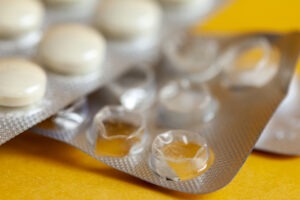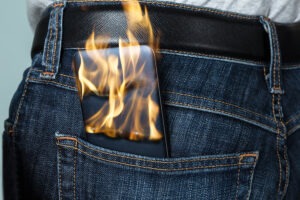
When people file defective product lawsuits in Florida, one of the most common questions that they ask is how long the case will take or how they can gauge it by the average timeline.
In our experience, every product liability claim is unique. Some can be resolved within months, while others can take years.
There’s no set rule on when a case must be resolved. It’ll take however long it needs to be settled. This is because of the often complicated nature of these cases. The average defective product case in Florida often involves one or more liable parties, requires complex technological or scientific investigations, and may involve a ton of other problems. So, they tend to take time.
However, if you need a timeline to work with, think six months to five years. But your Florida product liability lawyer will be in the best position to give you a more realistic timeframe.
Factors that Determine How Long Your Product Liability Case will Take
The duration of a defective product case in Florida is affected by the following factors:
- The number of people filing the claim (a class action will likely take longer than just one individual filing)
- The complexity of the case
- How many parties are liable
- How bad were the plaintiff’s injuries
- The settlement amount requested by the claimant
- The willingness of the liable parties to cooperate (if they contend your claim, you could be in for a long journey)
- Whether the product was recalled and when they were recalled
If these are resolved very quickly, the case won’t take as much time. But if these take time, your claim will take as long as need be, even when your personal injury lawyer prioritizes the case.
Take this case, for instance: A product liability class action claim against Nissan has been ongoing since 2017. And even though the class action has just been certified this year in 2022, the trial hasn’t even started yet.
Expect More, Receive More: Legal Support That Feels Like Family
How do You Establish that You Have a Product Liability Case in Florida?
Well, you’ll have to do that by proving that a product is defective and that you or your loved ones suffered injuries, harm, or losses from the use of the product. The reality is that when you buy a product, you do so with an expectation of how it should work.
When it doesn’t, and it causes considerable discomfort or inconvenience, you’re entitled to feeling dissatisfied. But dissatisfaction isn’t enough. You have to follow the recommended legal processes if you want to get compensated for your troubles.
To do that, you must take into consideration and prove one or more of the following:
- That the design of the product was flawed: Examples include vehicle steering wheels that lock while you’re in motion, children’s toys with choking hazards, sunglasses that don’t shield the eye from UV rays even when it’s advertised as that, and an electronic device that electrocutes users.
- That the manufacturing process was defective: For example, a contaminated batch of medications, vehicle seatbelts that don’t secure the passenger, and a vehicle with brakes that stick.
- That the manufacturer, producer, or retailer failed to notify you, the buyer, of their product’s dangers or side effects: For example, no warnings on the dangers of direct contact with liquid nitrogen, no safety precautions when using dangerous equipment, and no warnings about side effects or allergic potentials of a medication.
These are the three typical product liability negligence elements. Yours must fall under one or more of these to qualify for a claim. Ultimately, you’ll have to prove that it was one of those elements that caused your injuries or losses and nothing else.
For instance, if you were involved in a collision with another vehicle because your brakes failed, you have to show that the vehicle defect was because of the manufacturer’s error and not because you failed to change your brake pads or service your brakes when they were due.
What do You Need to Prove for Product Liability?
Before the courts will hear your case and approve your product liability claim, you have to show that you have legitimate proof that the product did cause you harm or losses. To establish the validity of your claim, you must show one or more of the following:
You Were Injured While Using the Product
The injuries you sustained have to be directly tied to the use of the product. For example, if the sole of your sneakers pulled out while you were walking with it and you stepped on a glass shard, that could qualify for a product defect claim.
You Suffered a Loss or Injury Because of the Product’s Defect
There has to be concrete evidence that you were injured. Using the example above, that would be the cut on your feet, possible CCTV cameras nearby, witness testimonies, and recordings.
You Were Using the Product in Its Intended Manner When the Accident Occurred
It is important that you were using the product in a specified manner when the accident occurred. For instance, if you jumped from a two-story building and the shoe ripped upon your impact with the ground, and the shard of glass cut you, that would likely not qualify.
But if you were just walking or jogging as you should when you were cut by the shard of glass, you would be well within your rights to file an injury claim against the manufacturer on the grounds that their shoe was defective.
The Product Already Had the Defect Before You Used It
You have to show that the flaw was already there before you used the product. But there was no way you would have known about it because it either wasn’t obvious or you didn’t know what to look for.
For example, the glue between the shoe sole and the upper part wasn’t properly applied, which is why the shoe pulled open while you were walking and you stepped your bare feet on the glass shard.
Please note that the manufacturer will likely deny these claims and insist that their product was in the reasonably safe state it was meant to be in when it was shipped out and when you bought it. They may also claim that you used their product for purposes other than the one they were meant for.
Establishing fault and proving liability takes time. Getting your claim denied may result in an appeal, which can take time. Your defective product case timeline will vary because of these numerous factors and many moving parts.
What if You Were Partly Responsible for Your Accident?
Florida is a pure comparative fault state. This means that even if you were at fault to a large extent, you can still get compensation. The only caveat is that your settlement will be affected by the degree to which you were liable.
For example, if the court awards you a $50,000 settlement but determines that you were 60% responsible for the incident that led to your injuries, you’ll only receive 40% ($20,000) as settlement instead of the full $50k.
Despite being able to file a claim on grounds of strict liability where you don’t have to show that the at-fault party was negligent, the comparative fault rule may still apply. If you are partly liable and are worried about the possibility of recovering compensation, it’s better to speak with an experienced defective product attorney in Florida about your concerns.
Consult With a Product Liability Attorney in Florida
As you can see, defective product cases in Florida are tough and require the expertise of an experienced professional if you want to win. Viles & Beckman, LLC’s product liability lawyers in Florida have the required skills and experience to fight for you and get you the compensation that you deserve.
If you have suffered losses or injuries from defective products, feel free to talk to our attorneys about your case. We offer free consultations on product liability cases in Florida and can help you understand the timeline of your defective product case once we know more details.
Contact us today to discuss your case.






